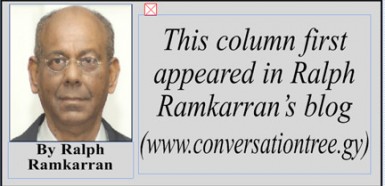 It should be of some significance to Christians that God’s message was not in “a raging whirlwind or a devouring fire” (Phillip Yancey quoted by Peter Wehner, NY Times December 24). His messenger on earth was an ordinary man who was born in difficult circumstances, even with a hint of scandal, in a manger, after his family could not be accommodated in the inn. He spent a part of his childhood as a refugee, as so many thousands of children and adults are forced to do today, grew up into a worker, a carpenter, and died in his 30s at a time when the lifespan could not have been much higher. Some who do not subscribe to the view that he was the son of God, described him as an itinerant preacher, undistinguished from many others at that time, whose story took on greater proportions after he died.
It should be of some significance to Christians that God’s message was not in “a raging whirlwind or a devouring fire” (Phillip Yancey quoted by Peter Wehner, NY Times December 24). His messenger on earth was an ordinary man who was born in difficult circumstances, even with a hint of scandal, in a manger, after his family could not be accommodated in the inn. He spent a part of his childhood as a refugee, as so many thousands of children and adults are forced to do today, grew up into a worker, a carpenter, and died in his 30s at a time when the lifespan could not have been much higher. Some who do not subscribe to the view that he was the son of God, described him as an itinerant preacher, undistinguished from many others at that time, whose story took on greater proportions after he died.
But Jesus was different. He did not merely preach. He led by example. He was a friend of the poor and felt that they had a greater advantage in being admitted to heaven than the rich. “Blessed are you the poor for yours is the Kingdom of God,” he said. Jesus told the rich man who wanted to inherit eternal life to “go sell all your possessions and give your money to the poor, and you will have treasure in heaven.” Most of his followers, including women, who were accorded an equal status as men despite the patriarchal society which they inhabited, were ordinary people. Many of the men, including Peter, were fishermen. There is no evidence that Mary, who witnessed Jesus’s crucifixion and resurrection, was anything more than of ordinary status. Her allegedly, prior, sinful character seems to have been a later invention.
My two favourite stories about Jesus, which for me are full of symbolism, are the expulsion of the moneylenders from the temple and his warning against hypocrisy.
It appears that at the time there was a proliferation of currency systems and large numbers of Jews came to Jerusalem with considerable sums of foreign currency to be exchanged. The moneychangers who changed foreign currency, changed large denominations into small ones and vice versa and provided banking services, carried out their operations in the Temple courtyard (Encyclopedia Judaica). It here that Jesus entered and according to Matthew 21:12 “drove out all who were selling and buying in the temple and he overturned the tables of the money changers and the seats of those who sold doves. He said to them, ‘It is written, my house shall be called a house of prayer, but you are making it a den of robbers.’” Scholars have interpreted the incident in numerous ways. But many of us believe that this bold act and Jesus’s words that “it is easier for a camel to go through the eye of a needle than for a rich person to enter the kingdom of God,” (Matthew 19:24), demonstrated an antagonism against the rich that accorded with a certain political philosophy. Those whose political views emphasize as a priority the advancement of the poor and advocate a greater contribution of the rich, have relied heavily on Jesus’s put down of the rich in these examples, even though the interpretation of these acts and words may have been exaggerated.
His warnings against hypocrisy are also uplifting and of universal value, particularly when hypocrites accuse others of hypocrisy, a trait commonly found in politicians. Matthew 7:1-3 (KJV) quotes Jesus as saying: “Judge not, that ye be not judged. For with what judgment ye judge, ye shall be judged: and with what measure ye mete, it shall be measured to you again. And why beholdest thou the mote that is in thy brother’s eye, but considerest not the beam that is in thine own eye.”
Usually, only the first sentence of the passage – Judge not, that ye be not judged ‒ is quoted to a person who makes a negative judgment of another. The statement has been used for various purposes, mainly to maintain peace or harmony generally or among church members. It is sometimes interpreted as a warning against anyone judging another because the person making the judgment is liable to be himself or herself judged.
However, taken as a whole, the passage is a warning against hypocrisy. It goes much further than warning the person making the judgment that he or she is liable to be judged. It urges him or her that before making a negative judgment against someone, he or she must ensure that he or she has no faults himself or herself or that any faults that he or she may have, have been rectified. (The ideas of portions of the first and second paragraphs were taken from an article in the ‘New York Times’ Dec 24, ‘Humanizing Jesus,’ by Peter Wehner).





